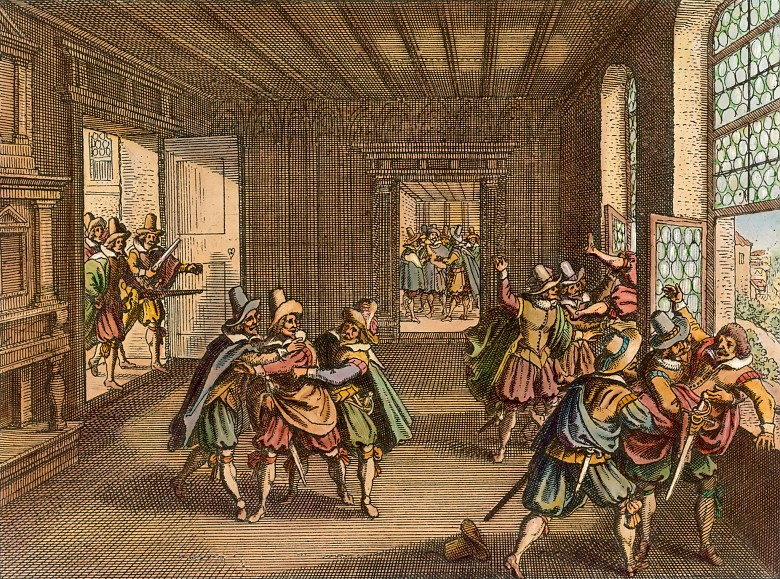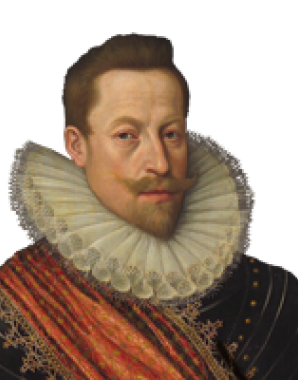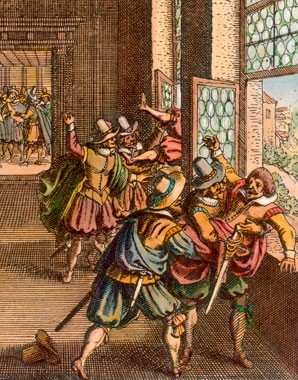From Graz to Vienna: the rise of Ferdinand II as head of the dynasty
The main Austrian line of the Habsburgs was heading for extinction: its most prominent representative, Emperor Rudolf II, and his ambitious brother Matthias remained without legitimate issue. The dynasty was additionally weakened by the power struggle between the two brothers, which presented their adversaries with an ideal target.
Ferdinand became the increasingly likely candidate as successor to the imperial throne. The ambitious archduke from Graz skilfully avoided taking up an unequivocal position in the conflict between the two brothers. In 1617 he concluded a secret treaty with his powerful Spanish relatives (the so-called Oñate Treaty), according to the terms of which Spain gave its agreement and support for Ferdinand’s succession in return for territorial concessions. The only point on which Ferdinand refused to compromise was in questions of religion. The mainly non-Catholic nobility in the lands of the Habsburg Monarchy was aware that the archduke, who was becoming ever more likely to succeed as emperor, would make the Counter Reformation his principal priority.
In 1617, through skilful political manoeuvring, an influential group of Catholic magnates managed to have Ferdinand crowned king of Bohemia, by-passing the non-Catholic majority in the Bohemian Diet.
However, Ferdinand’s rule in Bohemia was soon challenged: the simmering conflicts between the non-Catholic majority and the increasingly confident Catholic party among the nobility escalated, resulting in the Prague Defenestration of 1618, when the royal governors were thrown out of a window in Prague Castle by a group of opposition nobles. This was the trigger for an open revolt against the king’s regime, an uprising backed in part by the Estates of Moravia and Silesia. Subsequently Ferdinand was dethroned as king of Bohemia and replaced with the Calvinist elector Frederick of the Palatinate. The rebel Bohemian nobles wanted to raise the conflict to an international level and hoped – in vain, as would become apparent – to gain the support of the Protestant camp in Europe.
The death of Emperor Matthias in 1619 complicated the situation. The Estates of Lower and Upper Austria, which were likewise predominantly Protestant, at first refused to swear fealty to Ferdinand by refusing to participate in the traditional act of Hereditary Homage. At a particularly desperate juncture, when Ferdinand was about to be forced to make religious and political concessions by a group of Protestant nobles who had forced their way into the Hofburg in Vienna, something allegedly happened that was seized on and widely disseminated by contemporary pro-Catholic propaganda to illustrate Ferdinand’s steadfastness and unwavering trust in God: the crucifix that Ferdinand had turned to in prayer is said to have spoken to him distinctly, saying, ‘Ferdinande, non te deseram!’ (Ferdinand, I will not desert thee). Supposedly at that very moment a delegation of troops loyal to the emperor appeared at the gates of the castle and the rebels were forced to leave without having accomplished anything.
In 1618 Ferdinand was elected king of Hungary. But here too his rule was not unopposed: Gabriel Bethlen, prince of Transylvania, invaded the Habsburg half of the divided kingdom, where he found support among the nobility, most of whom were Protestant and who felt their freedoms were being curtailed by the counter-reformatory regime of their new ruler.
It was not until Ferdinand managed to secure the support of his cousin, Duke Maximilian of Bavaria, in return for extensive concessions, that he had the means to react effectively. Bavaria was the initiator of the Catholic League, a military alliance of Catholic powers in the Holy Roman Empire. An allied Catholic army of imperial and Bavarian troops arrived to do battle at the White Mountain near Prague on 8 November 1620, inflicting a defeat which led to the complete collapse of the Estates’ revolt.
Ferdinand attributed this success to the influence of the Virgin Mary, who had been declared the symbolic commander (‘Generalissima’) of the Catholic forces.
















